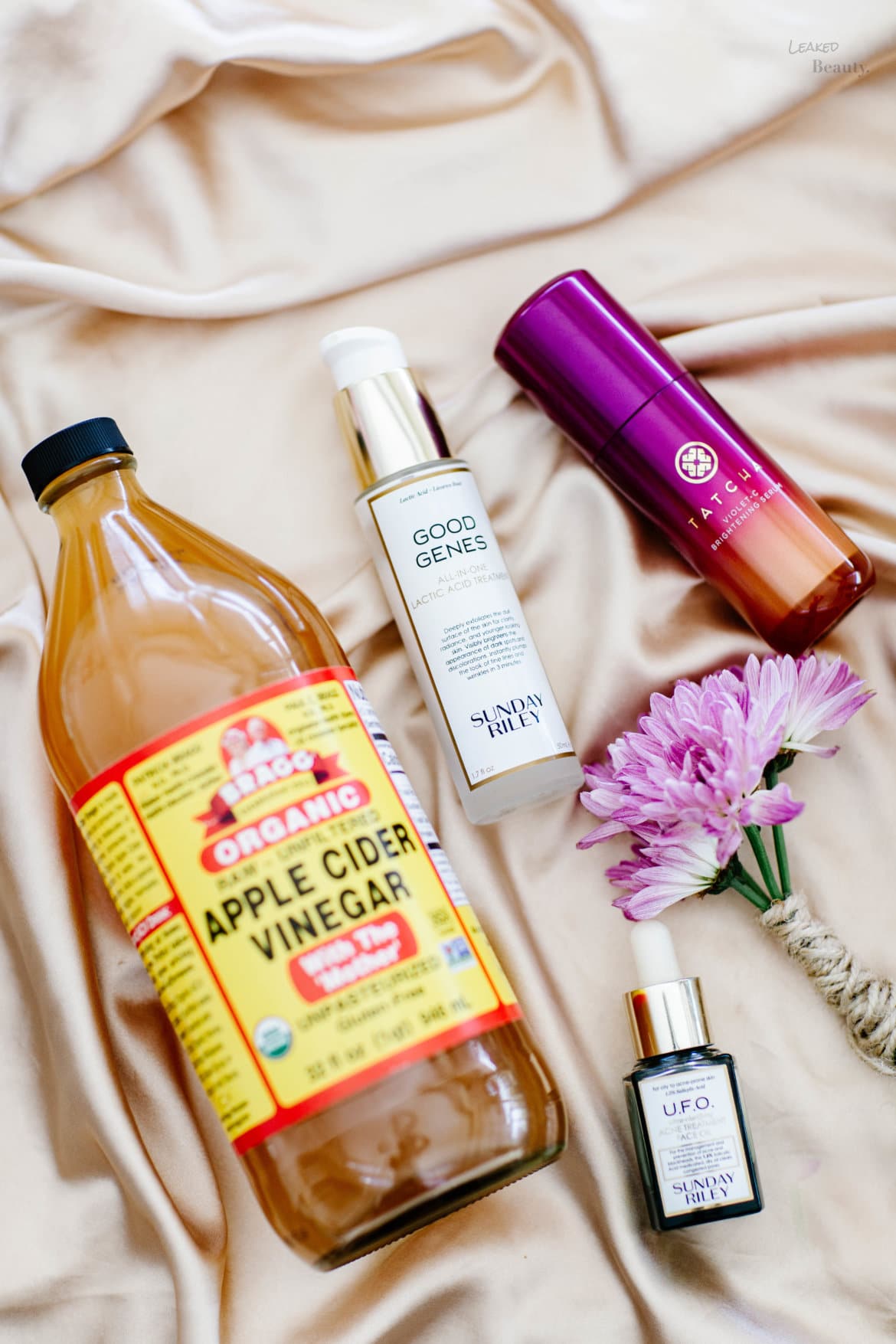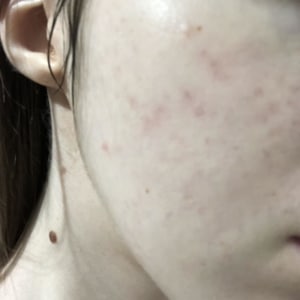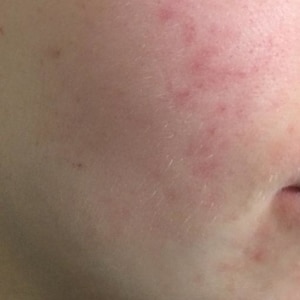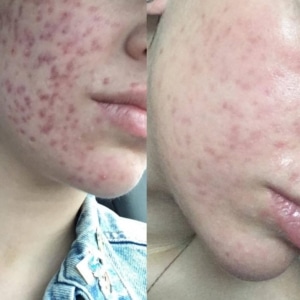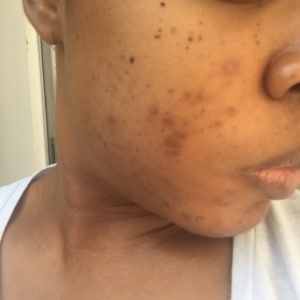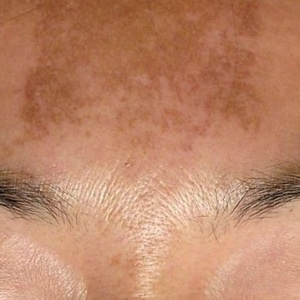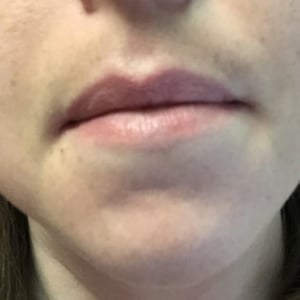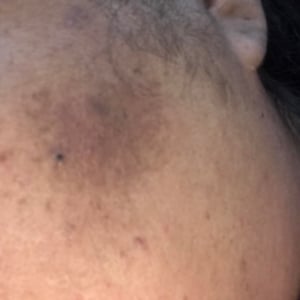The Best Treatments for Dark Spots (Hyperpigmentation)
Today we are going to look at the different forms of hyperpigmentation and how to reduce the dark spots on our face. If you are looking to brighten your face and avoid discoloration, we have an informative article for you below.
Not only do we dive into the best ingredients and holy grail products to fade dark spots, but we also inform you on how hyperpigmentation affects the different layers of your skin.
Stay woke, folks! (LOL).
Contents
What is Hyperpigmentation?
Hyperpigmentation is an “umbrella term” that describes any condition that leads to discoloration and dark spots. There are numerous causes for hyperpigmentation, but some of the most common forms result from eczema, psoriasis, excess sun exposure and acne.
The Three Most Common Types of Hyperpigmentation
PIE (Post Inflammatory Erythma):
This condition is caused by inflammation that agitates capillaries and blood vessels. It is bright pink or red in color. It can be caused by trauma to the skin such as acne, cuts and aggressive exfoliation. It is not due to excess melanin. Generally lighter skin tones tend to have this condition.
Photos of PIE:
PIH (Post Inflammatory Hyperpigmentation):
This condition is caused by inflammation (melanin production is overactive) of the skin and shows as purple, dark red or brown. It’s common in medium to dark skin tones. The deeper the inflammation is, the more difficult it is to get rid of.
Photos of PIH:
Melasma
This is a pigmentation disorder that causes brown or gray patches on the skin. It is believed to be caused by genetics, UV exposure and hormonal influences. It’s also known as the “pregnancy mask” because it is common to show up during pregnancy.
Photos of Melasma:
Quick test: If you touch your spot and it quickly turns white, you probably have PIE. If you touch your spot and it doesn’t change colors, then it’s most likely PIH. Although, it is possible to have PIE and PIH at the same time.
Important Tips to Avoid Further Damage
Tips:
- Look for ingredients that inhibit melanin production.
- The first thing you want to do is calm down inflammation.
- Avoid picking at your zits!
- Avoid harsh ingredients that can further irritate the skin (including strong essential oils, fatty alcohols and astrigents).
- Be patient, it takes time to get rid of dark spots! Remember your skin sheds naturally every 28-30 days!
- ALWAYS WEAR SUNSCREEN to avoid further damage.
The Best Skincare Products to Fade Dark Spots
Hydroquinone:
A controversial and potent ingredient that brightens dark spots, targets the melanocytes which stop the melanin production.
Pros: Considered the “gold standard” in skincare for lightening the skin.
Cons: It cannot be used long term, it’s too strong! Also, it can cause side effects such as skin sensitivity and irritation. It is banned in most European countries. Pregnant women should not use this!
Arbutin:
Arbutin slows the production of melanin by targeting the tyrosinase within the melanocytes.
Pros: This ingredient is an extract that comes from bearberries, blueberries and cranberries. It gives the same results as hydroquinone, but it doesn’t include the side effects. Works well with vitamin C and AHAs.
Cons: Excessive use of Arbutin can cause sunburns — make sure to always read the labels of any skincare product and only use what is recommended!
Kojic Acid:
Kojic acid is a natural alternative to hydroquinone! It targets the copper within the tyrosinase to stop melanin from producing. This ingredient is naturally produced from fungi and fermented foods such as soy, rice and sake.
Pros: Kojic acid lightens hyperpigmentation and is rich in antioxidants. It’s also anti-microbial, anti-aging, anti-inflammatory and offers some shielding against the sun. This can be used long-term and pairs well with AHAs.
Cons: There is a chance of skin irritation and sunburn if you don’t use SPF with it!
Azelaic Acid:
Now moving on to one of our favorite ingredients, Azelaic acid! This ingredient targets the tyrosinase to stop melanin and it also helps decrease inflammation.
Pros: Azelaic acid helps target PIE, melasma, rosacea and acne. It also kills P. acnes that live in hair follicles.
Cons: This ingredient makes you more sensitive to the sun, WEAR SPF!
AHAs (Alpha Hydroxy Acids):
AHAs such as lactic acid, mandelic acid, glycolic acid are chemical exfoliants that help your skin shed dead skin cells to reveal new and brighter skin.
Pros: Helps brighten your skin and lessen hyperpigmentation. AHAs are derived from fruit and plant extracts.
Cons: Excessive use can irritate the moisture barrier and it can increase sun sensitivity. Don’t want to sound like a broken record, but SUNSCREEN is vital when using AHAs.
Licorice Extract:
Licorice extract contains Glabridin which is an active ingredient that hinders the process of melanin by targeting the enzymes that cause pigmentation.
Pros: Contains Glabridin & Licochalcone which are anti-oxidants that fight free radicals and UV damage. It also soothes inflammation and regulates oil production.
Vitamin A, B, C:
Vitamin A, B and C assists with cell renewal to shed the dead layers of the skin, which helps lighten pigmentation.
Pros: Vitamin A (retinoid) is good for PIH and melasma. Vitamin B3 (niacinamide) is good for PIE and melasma. Vitamin C (L-Ascorbic acid) is good for PIH and melasma.
Cons: Be careful, start with small percentages if your skin isn’t acclimated to these ingredients! Always patch-test, especially if your skin is sensitive.
Zinc Oxide:
Zinc oxide is sunscreen! Regardless of whatever you add or take away from your skincare routine, ALWAYS wear sunscreen. Even if you don’t suffer from hyperpigmentation, make sure to lather on sunscreen! It’s the most important step to slow down the aging process.
Whether it’s shiny, rainy, cloudy, stormy or whatever, NEVER forget to put on SPF!
Keep in mind, what might work for someone else’s skin might not be the best for yours. Personally, I would stay away from skincare with hydroquinone it it (ESPECIALLY if you’re pregnant). The side effects don’t sound pleasant at all and I’m not willing to take the risk.
As always, make sure to always read the labels, people! Inform yourself on what ingredients can be used together and which ones should be used separately. Always patch-test new products and slowly incorporate them into your skincare routine. Be consistent, miracles don’t happen over night!
DIY Face Masks
Ready for some fun masks for your next girls night?! These are really easy peasy to make and you most likely already have the ingredients in your kitchen.
But before you start, what’s the number one rule of masking?! Always wash your face first!
Apple Cider Vinegar & Water Mask:
The acetic acid in Apple Cider Vinegar reduces the melanin production. This is best for PIH and melasma.
Mix Apple Cider Vinegar with water (1:1 ratio). If you have sensitive skin, apply to the skin and then wash it off after a couple minutes. You can also use it as a toner.
Matcha & Green Tea Mask:
Green Tea & Matcha lightens dark pigmentation by stopping the tyrosinase from producing melanin. These ingredients are rich in anti-oxidants and have anti-inflammatory properties. These home remedies are great for people with PIE!
After drinking your green tea, gently use the tea bag on the dark areas of your skin. Let the green tea skin into your skin.
We also recommend using Matcha, honey and a little bit of water to make a mask. Matcha is more powerful than green tea and honey helps to soothe the skin. Keep on your skin anywhere from 5-20 minutes.
Milk Mask:
What?! Really?! Yes, milk contains lactic acid which is great for all those dark marks! It’s also very hydrating for all you dry-skin peeps out there.
Heat up a little bit of milk on the stove (add honey if you want). Once it is at a pleasant warm temperature (that doesn’t burn your skin DUH), soak a clean towel into it and softly dab your face with it. Do it several times all over your face until you used up all the milk.
Voila! Now this concludes all of the remedies for your PIH, PIE and melasma issues.
- The Best Hair Claws on Amazon! - October 7, 2020
- My Pmel Essence Mascara Base Review - September 28, 2020
- The Best Treatments for Dark Spots (Hyperpigmentation) - July 23, 2020
